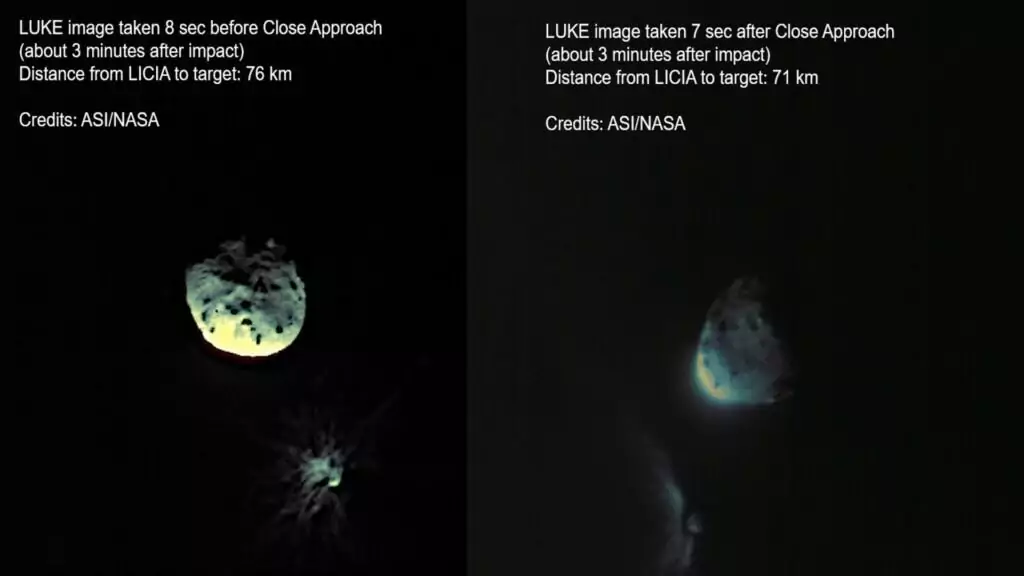The Dimorph ram took place on September 26, 2022. A few minutes after the impact, the Italian cubesat LICIACube made a close flyby of the asteroid.
The pictures he took showed that the impact knocked out a large amount of matter from the surface of the Dimorph. According to experts, during the subsequent analysis of the cubesat images, they even managed to detect the shadows cast by the fragments of the Dimorph on the surface of Didymus.
In addition, the Dimorph has acquired a bright comet-like tail stretching for thousands of kilometers. Despite the fact that several months have passed since the impact, it can still be seen on telescope images.
